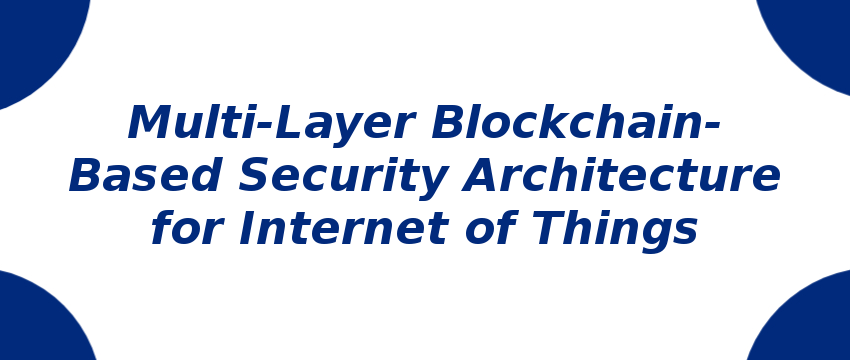Research Area: Blockchain Technology
first_pagesettingsOrder Article Reprints Open AccessArticle Multi-Layer Blockchain-Based Security Architecture for Internet of Things by Houshyar Honar Pajooh 1,*ORCID,Mohammad Rashid 1ORCID,Fakhrul Alam 1ORCID andSerge Demidenko 2ORCID 1 Department of Mechanical and Electrical Engineering, Massey University, Auckland 0632, New Zealand 2 School of Science and Technology, Sunway University, Selangor 47500, Malaysia * Author to whom correspondence should be addressed. Sensors 2021, 21(3), 772; https://doi.org/10.3390/s21030772 Submission received: 31 October 2020 / Revised: 8 January 2021 / Accepted: 20 January 2021 / Published: 24 January 2021 (This article belongs to the Section Intelligent Sensors) Downloadkeyboard_arrow_down Browse Figures Versions Notes Abstract The proliferation of smart devices in the Internet of Things (IoT) networks creates significant security challenges for the communications between such devices. Blockchain is a decentralized and distributed technology that can potentially tackle the security problems within the 5G-enabled IoT networks. This paper proposes a Multi layer Blockchain Security model to protect IoT networks while simplifying the implementation. The concept of clustering is utilized in order to facilitate the multi-layer architecture. The K-unknown clusters are defined within the IoT network by applying techniques that utillize a hybrid Evolutionary Computation Algorithm while using Simulated Annealing and Genetic Algorithms. The chosen cluster heads are responsible for local authentication and authorization. Local private blockchain implementation facilitates communications between the cluster heads and relevant base stations. Such a blockchain enhances credibility assurance and security while also providing a network authentication mechanism. The open-source Hyperledger Fabric Blockchain platform is deployed for the proposed model development. Base stations adopt a global blockchain approach to communicate with each other securely. The simulation results demonstrate that the proposed clustering algorithm performs well when compared to the earlier reported approaches. The proposed lightweight blockchain model is also shown to be better suited to balance network latency and throughput as compared to a traditional global blockchain.
Keywords:
Author(s) Name: Houshyar Honar Pajooh,Mohammad Rashid ,Fakhrul Alam and Serge Demidenko
Journal name: Sensors
Conferrence name:
Publisher name: MDPI
DOI: 10.3390/s21030772
Volume Information: Volume 21, (2021)
Paper Link: https://www.mdpi.com/1424-8220/21/3/772
